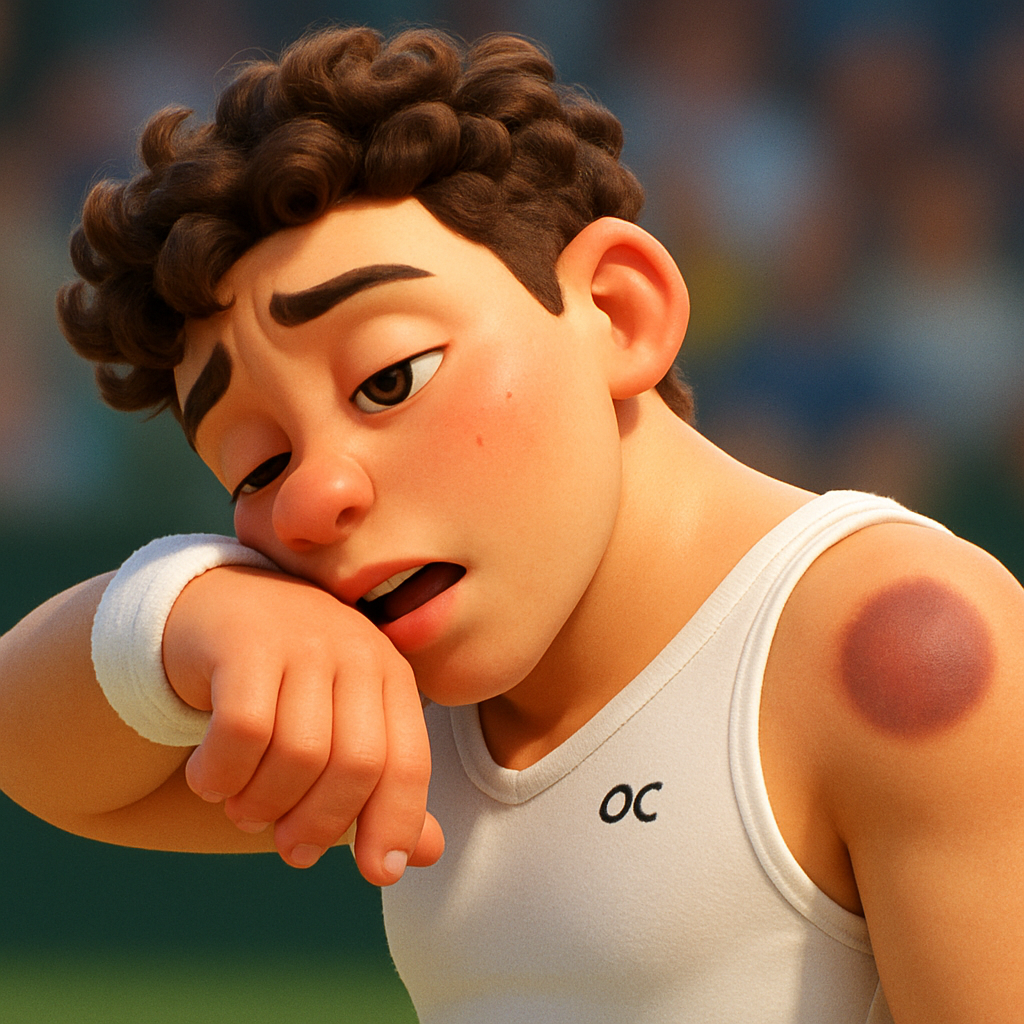LONDON — Tennis fans were left puzzled during Ben Shelton’s Wimbledon clash against Jannik Sinner when commentator Clare Balding pointed out unusual markings on the American’s shoulders. The mysterious red lines sparked speculation, with some wondering if they were part of a recovery technique or a tactical ploy.
The 21-year-old Shelton, known for his explosive serve and energetic playing style, had the markings clearly visible during his fourth-round match on Court No. 1. Balding, a seasoned broadcaster, remarked on the strange patterns, saying, "Those markings on Ben Shelton’s shoulders are certainly unusual—I’ve never seen anything quite like that before in tennis."
What Were the Markings?
The red lines appeared to be consistent with cupping therapy, an alternative treatment often used by athletes to improve blood flow and muscle recovery. The technique involves placing suction cups on the skin to create localized pressure, which can leave temporary circular or linear marks. While not uncommon in sports like swimming (as famously seen on Michael Phelps), it’s less frequently observed in tennis.
Sports physiotherapist Dr. Emma Carter explained, "Cupping can help with muscle tightness and inflammation. Given Shelton’s powerful serve and the physical demands of grass-court tennis, it wouldn’t be surprising if he used it pre-match."
Why Would Shelton Use Cupping?
Shelton’s aggressive playing style puts significant strain on his shoulders and upper body. The potential benefits of cupping include:
- Improved circulation to fatigued muscles
- Reduced muscle soreness post-match
- Enhanced flexibility for explosive movements
However, some experts question its efficacy. Dr. James Reynolds, a sports scientist, noted, "While some athletes swear by cupping, the scientific evidence is mixed. It may be more of a placebo effect than a proven performance enhancer."
Fan Reactions and Social Media Buzz
The markings quickly became a talking point on social media, with fans debating their purpose. Some speculated they were kinesiology tape residue, while others joked about "alien abduction marks." One fan tweeted, "Ben Shelton either had a run-in with a vacuum cleaner or he’s secretly a superhero."
Shelton himself hasn’t publicly addressed the markings, but his team has previously confirmed his use of recovery therapies, including ice baths and massage. Given his rapid rise in the sport—reaching the US Open semifinals in 2023—his fitness regimen is clearly a priority.
Historical Use in Tennis
While cupping is rare in tennis, it’s not unprecedented. Novak Djokovic has experimented with alternative therapies, including acupuncture and hyperbaric chambers. Andy Murray, too, has incorporated unconventional recovery methods during his career. Shelton’s markings suggest he’s open to exploring every possible edge.
Conclusion: A Sign of Modern Sports Science
Whether cupping provided a tangible benefit or not, Shelton’s match against Sinner was fiercely contested, with the Italian ultimately prevailing in four sets. The markings, however, highlighted the evolving landscape of athlete recovery—where traditional methods meet experimental techniques.
As Balding summed up during the broadcast, "It just goes to show how far players will go to gain that extra 1%—whether it’s cupping, taping, or some other innovation we haven’t even seen yet."

